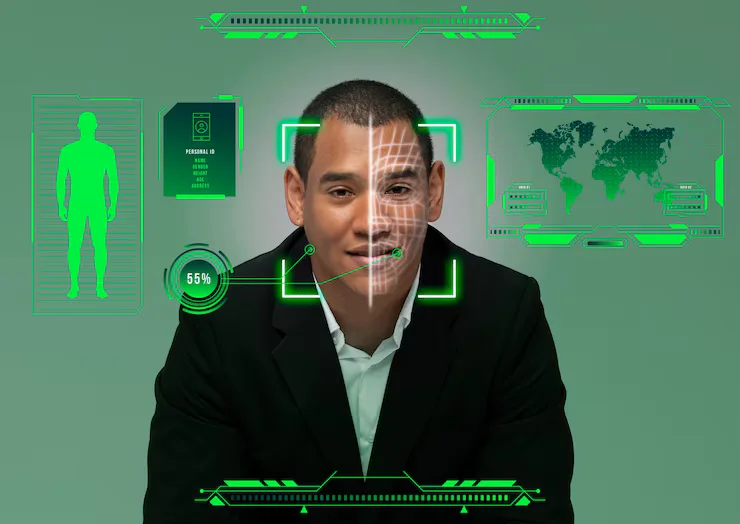As law enforcement agencies in Virginia explore the implementation of facial recognition technology, they face essential considerations that influence its effectiveness and legality. Understanding the legal framework and ethical implications surrounding facial recognition is crucial for ensuring responsible usage and maintaining public trust. Navigating state laws, privacy concerns, and accuracy standards will play a significant role in shaping how this technology is utilized.
Agencies must also be aware of public sentiment regarding surveillance and data collection, as community acceptance can impact the success of their initiatives. Transparency in how data is collected and used will be vital in addressing potential backlash. Adopting best practices in technology deployment can enhance operational effectiveness while safeguarding civil liberties.
Legal Framework Governing Facial Recognition in Virginia
Virginia’s legal landscape regarding facial recognition technology comprises state privacy laws and pertinent national and international standards. Understanding these regulations is essential for law enforcement agencies to utilize this technology effectively and legally.
Virginia Privacy Laws and Regulations
Virginia has established specific privacy laws that govern the use of facial recognition technology. The Virginia Consumer Data Protection Act (VCDPA) is a key legislative framework that promotes data protection and privacy. It requires data collectors, including law enforcement, to ensure transparency regarding the collection and processing of personal data.
Furthermore, the Virginia Freedom of Information Act (FOIA) mandates that records related to the use of facial recognition, such as guidelines and data retention policies, be accessible to the public. Law enforcement agencies must also consider the implications of the Virginia Personal Privacy Act, which emphasizes the protection of individuals’ personal information.
Law Offices of Michael A. Pignone views law enforcement use to ensure compliance with these regulations to avoid potential legal repercussions and to maintain public trust.
National and International Standards
In addition to state laws, law enforcement in Virginia must consider national and international standards related to facial recognition technology. The Federal Bureau of Investigation (FBI) offers guidelines that encourage proper usage protocols. These guidelines aim to mitigate risks such as misidentification and bias in facial recognition systems.
On the international stage, the General Data Protection Regulation (GDPR) in the European Union sets strict rules on data protection and privacy. While it applies primarily to EU member states, it influences best practices globally. Virginia law enforcement agencies can look to these standards to align their practices with broader expectations for ethical data handling.
Compliance with these standards is vital for ensuring that technological advancements do not infringe on individual rights. Adhering to established regulations supports fair use and builds public confidence in law enforcement’s technological capabilities.
Practical Implications of Facial Recognition for Law Enforcement
Facial recognition technology presents both opportunities and challenges for law enforcement agencies. Effective strategies for deployment and real-world case studies reveal the impact and efficacy of this technology in practice.
Effective Deployment Strategies
Successful implementation of facial recognition technology requires a well-defined strategy. This includes selecting reliable software that can accurately identify individuals in various conditions, such as different lighting and angles.
Training officers on proper usage is critical, ensuring they understand the technology’s strengths and limitations. Agencies should also establish clear guidelines and protocols for data usage, ensuring compliance with legal and ethical standards.
Collaboration with other departments can enhance the effectiveness of facial recognition systems. Officers can share data and insights, increasing the technology’s value in investigations. Regular audits of the technology’s effectiveness should be conducted to maintain accuracy and public trust.
Ethical Considerations and Public Perception
The implementation of facial recognition technology (FRT) raises significant ethical questions and influences how the public views law enforcement. Addressing privacy concerns and fostering community trust are critical for effective use.
Privacy and Civil Liberties Concerns
Facial recognition technology can lead to invasive surveillance practices. This raises questions about individuals’ privacy rights and civil liberties.
Many citizens express discomfort with constant monitoring. For example, using FRT without clear policies can create a perception of a police state.
In Virginia, transparency and accountability are vital. Law enforcement should implement robust data protection measures. This ensures that collected data is used responsibly and ethically.
A lack of regulations may result in unauthorized tracking or misuse of data. It is essential for law enforcement to provide assurances that systems uphold privacy rights.
Building Trust with the Community
Building trust is essential for law enforcement agencies that utilize facial recognition technology. Engaging with the community can foster openness and collaboration.
Agencies can establish trust by involving community members in discussions about FRT usage. Public forums and transparency around policies are beneficial.
Educating the public on how FRT works can also alleviate concerns. When citizens understand the intended use, they are more likely to feel secure.
Advancements and Future Trends in Facial Recognition Technology

Recent developments in facial recognition technology highlight significant advancements in algorithms and the potential future applications for law enforcement. As technology evolves, so too do the capabilities of these systems, which could enhance public safety measures.
Innovations in Facial Recognition Algorithms
New algorithms are consistently emerging in the field of facial recognition. Techniques such as deep learning and neural networks have improved accuracy rates significantly.
- 3D facial recognition captures more detailed features, enhancing reliability in various lighting and angle conditions.
- Generative Adversarial Networks (GANs) are used to create synthetic training data, improving system robustness.
These innovations lead to faster processing times and reduced false-positive rates. As a result, law enforcement agencies may find these tools beneficial for identifying suspects in real-time situations.
Forecasting Potential Law Enforcement Applications
The future of facial recognition in law enforcement presents several possible applications.
- Incident response can be expedited through real-time identification, allowing officers to act more swiftly.
- Enhanced surveillance systems may integrate facial recognition to track individuals in crowded public spaces.
Additionally, agencies may implement predictive policing strategies, using algorithms to assess potential crime hotspots. As technology continues to advance, law enforcement agencies need to remain informed about these trends to harness the benefits effectively while ensuring compliance with legal standards.







